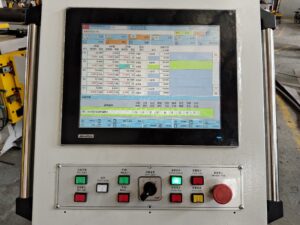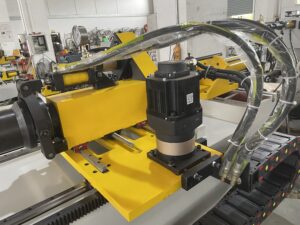How Do I Make a Bending Electrical Pipe?
If you have ever wanted to tackle a home or workshop project involving electrical wiring, understanding the process of bending electrical pipe is a key skill. Bending conduit (the metal tubing that protects and routes electrical wiring) not only helps with organizing cables neatly but also reduces the risk of damage. However, achieving precise and professional bends can be challenging for beginners. In this comprehensive guide, we’ll walk you through the essential steps, discuss the tools required, and provide a real-life example to help you master the art of bending conduits like an experienced technician.

1. Understanding the Basics of Electrical Conduit
Electrical conduit is a tube made of materials such as steel, aluminum, or PVC, which is used to protect and route electrical wiring. Bending conduit involves shaping the tube to fit around corners, through tight spaces, or into specific positions without compromising the integrity of the wires inside. The most common types of conduit used include:
- EMT (Electrical Metallic Tubing): Lightweight and relatively easy to bend, often used in commercial and residential wiring.
- IMC (Intermediate Metal Conduit): Thicker than EMT, offering more robust protection but requiring more force to bend.
- RMC (Rigid Metal Conduit): More durable and thick-walled, making it best suited for demanding environments or exterior installations.
- PVC Conduit: Non-metallic and typically bent using heat, making it popular in places with moisture or corrosive conditions.
Each type has unique properties, but the principles of bending electrical pipe remain consistent across different conduit materials.
2. Why Is Bending Electrical Pipe Important?
Many people wonder why bending electrical pipe correctly is so critical. After all, couldn’t you just force cables around corners? Not exactly. Proper bends ensure:
- Safety: Sharp bends can damage insulation, creating potential electrical hazards.
- Longevity: Smooth curves reduce stress on wiring, making your work last longer with fewer maintenance concerns.
- Aesthetics: Professional-looking bends give a clear, organized appearance.
- Efficiency: Fewer fittings and connectors mean fewer potential failure points, saving time and money in the long run.
Whether you’re wiring a new workshop or adding extra outlets in your home, understanding how to bend conduit properly guarantees a neater and safer end result.
3. Essential Tools for Bending Electrical Pipe
Before you start bending electrical pipe, gather the proper tools. Having the correct equipment ensures accurate bends and reduces the risk of damaging your conduit. Here’s what you’ll need:
- Conduit Bender: Specifically designed to bend different sizes and types of conduit. The head of the bender often includes angle markings to aid accuracy.
- Tape Measure: Used to measure the required lengths and plan your bends precisely.
- Marker or Pencil: For marking bend locations on the conduit.
- Level: Ensures your bends line up correctly on both the horizontal and vertical axes.
- Personal Protective Equipment (PPE): Always wear safety goggles, gloves, and protective clothing to prevent injuries during cutting and bending processes.
In some cases, you might also need a pipe vice (or a sturdy clamp) to hold the conduit firmly in place while making measurements or performing more intricate bends.
4. Preparing the Conduit for Bending
Proper preparation is essential to achieve the results you want:
- Measure and Plan: Mark the exact point where you want the bend. Identify the angle needed, typically 90°, 45°, or another specific angle.
- Clean the Surface: If you’re working with metal conduit, clean away any dirt or debris to ensure accurate markings.
- Double-Check Environment: Confirm there’s enough workspace around you so you can make a smooth, continuous bend without obstructions.
- Secure the Conduit: Place the conduit on a stable surface, or use a clamp if necessary, to begin the bending process.
The more time you spend on preparation, the fewer errors you’ll encounter during the actual bend.
5. Step-by-Step Method for Bending Electrical Pipe
5.1 Mark Your Bend Points
Using a measuring tape and marker, locate the start of the bend. If you’re making multiple bends, label each clearly to avoid confusion. Accurate marking is the foundation of a successful bend.
5.2 Position the Conduit in the Bender
Align the mark on the conduit with the arrow or star symbol on the bender head. Different bender heads have different reference points, so consult the manufacturer’s guidelines to determine which mark to use for your desired bend angle.
5.3 Apply Steady Pressure
Place one foot securely on the bender’s footrest and hold the conduit handle firmly. Apply pressure in a smooth, even motion. Avoid jerky or rapid movements, which can cause kinking or misalignment. Watch the angle indicator on your bender or use a level to check progress.
6. Common Types of Bends and How to Create Them
6.1 90° Stub Bend
A stub bend is one of the most common types of bends you’ll encounter. It starts at the end of the conduit and creates a neat 90° angle. This bend is used frequently in corners or when conduit extends from a junction box.
- Mark the Stub Length: Measure from the known endpoint back to where you want the conduit to turn 90°.
- Align with the Bender: Match the mark with the bender’s arrow (or the mark specified by the manufacturer).
- Bend Gradually: Ensure smooth pressure until the angle reaches 90°, accounting for a bit of spring back.
6.2 Back-to-Back Bend
When an immediate second bend is required, you can perform a back-to-back bend:
- First Bend: Create a standard 90° stub bend.
- Measure the Distance: Determine the distance between the two 90° bends.
- Second Mark: Mark the conduit based on the centerline distance.
- Bend Again: Align the second mark and bend to 90°, forming a U-shape or offset shape depending on your project.
6.3 Offset Bend
An offset bend is used to route conduit around obstacles like beams or other pipes:
- Determine Offset Height: Measure how far the conduit must travel laterally to bypass the obstacle.
- Use Geometry: You can use trigonometry (sine, cosine) or specific offset charts to determine exact bend angles.
- Create Two Bends: Typically involves two equal angle bends (e.g., 45° and 45°) that reposition the conduit without needing extra connectors.
7. Safety Considerations When Bending Electrical Pipe
Bending electrical pipe is not inherently dangerous, but you should still take precautions:
- Wear PPE: Goggles, gloves, and closed-toe shoes protect you from sharp edges and potential kickbacks.
- Check the Conduit Integrity: Inspect for cracks or dents before bending. Damaged conduit can fail during the bending process.
- Watch Your Posture: Maintain a stable stance and leverage your body weight rather than straining your arms or back.
- Inspect Tools: Make sure your bender is in good condition, with no worn-out pivot points or rust that could lead to inaccurate bending.
Always exercise caution and follow local electrical codes to ensure a safe and compliant installation.
8. Real-World Case Study: Workshop Lighting Upgrade
To bring these concepts to life, consider the following practical example:
Scenario: Alex is upgrading his workshop lighting. He wants to install two new fluorescent fixtures on the ceiling and run conduit along the exposed rafters. Obstacles include a small ceiling beam and a corner where he needs a 90° turn.
Step-by-Step Approach:
- Planning and Measurement: Alex measures the distance from the electrical panel to the first fixture, marks the locations of the corner, and notes the dimension of the beam he needs to bypass.
- Select the Conduit Type: Alex chooses EMT conduit for its lightweight nature.
- Bending the 90° Stub Bend: Using his conduit bender, Alex marks the start of the bend where the conduit enters the workshop’s corner. He carefully creates a 90° stub bend, checking alignment with a level.
- Creating an Offset Bend: To navigate around the beam, Alex calculates a 45° offset. He marks two bend locations several inches apart, bends each to 45°, and lands precisely clear of the beam.
- Final Check and Installation: Alex ensures all bends align with the fixture’s junction box, fastens the conduit with appropriate hangers, and pulls the electrical wiring through smoothly.
Outcome: With properly executed bends, Alex’s conduit path is clean, free from sharp turns, and complies with local code requirements. The result is a professional-looking installation that safeguards the new wiring and adds to the workshop’s overall organization.
9. Troubleshooting Common Bending Issues
1. Kinks or Flattened Conduit: Occurs when bends are made too quickly or with uneven pressure. Avoid abrupt force; distribute your weight on the bender’s handle steadily.
2. Over-Bending: You went beyond your intended angle. Keep an eye on the bend mark and angle gauge. In some cases, you can slightly re-bend in the opposite direction, but too much manipulation may weaken the conduit.
3. Misalignment or Twisting: If your bends aren’t lining up on the same plane, use a level after each bend. Double-check the conduit’s orientation before bending to prevent a twist.
4. Incorrect Calculations: Relying on guesswork can lead to frustration. Use formulas or standard charts to determine bend allowances and shrinkage, particularly for complex bends.
10. Tips for Perfecting Your Bending Technique
- Practice Makes Perfect: Save scrap pieces of conduit to refine your skills. Experiment with different angles and techniques until you gain confidence.
- Mark Reference Points: Keep a consistent start point, centerline mark, and angle references to maintain uniform bends across multiple conduits.
- Use Leverage Wisely: Leverage comes from your legs, hips, and core rather than solely your arms. This reduces fatigue and improves bend control.
- Keep Tools Clean and Maintained: A well-lubricated, dust-free conduit bender ensures smoother action and accurate results.
Click for more detailed information.




